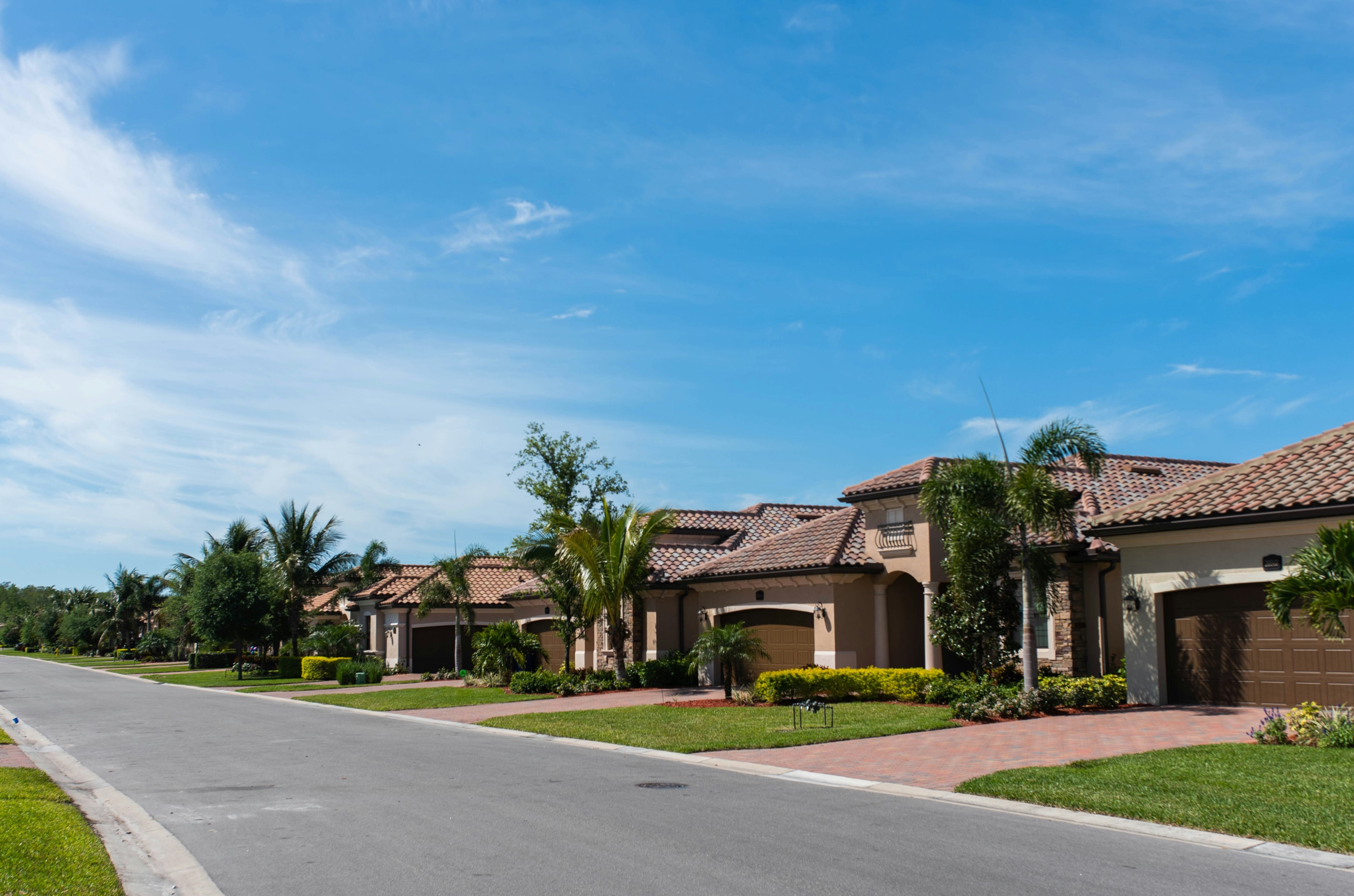Real Estate Market Slowdowns: A Deep Dive Into Causes, Effects, and Opportunities
Introduction to Real Estate Market Slowdowns
Every investor, homebuyer, or seller eventually faces the same reality: the real estate market doesn't always move in one direction. Booms are followed by peaks, and peaks are followed by slowdowns. A real estate market slowdown occurs when sales activity begins to cool, prices stabilize or dip, and the red-hot competition that defined a "seller's market" starts to fade. But here's the secret many don't realize—slowdowns aren't always bad news. For some, they create fear, but for savvy investors and strategic buyers, they open the door to golden opportunities that don't exist in overheated markets.

Key Causes of Real Estate Market Slowdowns
Rising Interest Rates and Higher Borrowing Costs
Higher interest rates drive up borrowing costs for homebuyers. When the interest rate rises, it directly impacts mortgage rates, making it more expensive to finance a home. High interest rates and elevated mortgage rates have contributed to significant affordability challenges for buyers in today's market. As a result, monthly payments increase, buyers qualify for smaller loans, affordability shrinks, and demand cools.
Inflation and Declining Affordability
Rising costs of food, gas, and daily living have created significant affordability challenges for buyers, making it harder to save for down payments or service mortgages. Affordability issues have become a major concern for many buyers in the current market, as high home prices and mortgage rates limit their ability to purchase homes.
Oversupply of Housing in Certain Markets
Increased supply in certain regions, such as Texas and Florida, has led to more homes on the market. Building activity that outpaces buyer demand can result in excess inventory, putting downward pressure on prices. When builders overshoot demand, excess inventory drags down prices and slows sales. Waning demand can further exacerbate the effects of increased supply, making it harder for the market to absorb available homes.
Shifts in Employment and Local Economies
Significant changes in employment levels, such as job losses, wage stagnation, or downturns in key industries like technology, oil, or manufacturing, can have a direct and profound impact on regional housing demand. When local economies weaken, fewer people are able or willing to buy homes, leading to reduced buying activity and slower market momentum in affected areas.
Consumer Confidence and Behavioral Shifts
Even when potential buyers have the financial means to purchase a home, uncertainty about the economy, job stability, or future market conditions can cause hesitation. This lack of confidence often results in stalled market activity, as would-be buyers delay decisions, waiting for clearer signals or more favorable conditions before committing to a purchase.
Global and Geopolitical Influences
Broader global events such as economic recessions, trade wars, or pandemics can create ripple effects that slow housing demand and spook investors. These factors contribute to economic uncertainty and risk aversion, which in turn dampen buyer enthusiasm and can lead to a cautious approach in real estate markets worldwide.

Clear Signs a Market Is Slowing
Homes are staying on the market longer than before, with many properties remaining unsold for months instead of weeks, while price cuts have become more common and more sellers are lowering their asking prices to attract buyers. Mortgage applications are dropping month over month, and there is a decline in homes sold compared to the previous month. New construction is slowing as builders become more cautious, and home sales data is often seasonally adjusted to account for regular fluctuations. Buyers now have more leverage in negotiations, with some regions shifting toward a buyer's market, giving buyers increased negotiating power. If you've noticed these patterns in your area, chances are your local market is entering a slowdown phase.
Home Prices and Inventory
The housing market is entering a new phase, marked by slower home price growth and a noticeable shift in inventory. As of June 2025, the median sales price of existing homes rose by just 1.9% year-over-year—the slowest pace of appreciation since mid-2023. This trend of slower home price growth is expected to continue, signaling a more balanced market after the rapid price growth of the past few years. One of the biggest changes is the surge in housing inventory. Supply has jumped 33% compared to last year, and experts predict that housing inventory could return to pre-pandemic levels by the end of 2025 or even sooner. This increase is largely due to the "lock-in effect" starting to ease: homeowners who previously held off selling because of their ultra-low mortgage rates are now more willing to list their properties. As more existing homes come onto the market, buyers are gaining more negotiating power than they've had in years. For buyers, this means more choices and the ability to negotiate on price, repairs, or closing costs. Sellers, on the other hand, are finding they need to reduce prices or offer incentives to attract buyers in a more competitive environment. The days of multiple offers and bidding wars are fading, replaced by a market where pricing strategy and property condition matter more than ever. As inventory continues to rise and the lock-in effect loosens, both buyers and sellers will need to adapt to these new market realities.
How Market Slowdowns Affect Different Players
Impact on Homebuyers
Finally, buyers gain breathing room—less competition, more options, and stronger negotiation power. With fewer bidding wars and more homes available, homebuyers can take their time to find properties that truly meet their needs and budgets. This slowdown often means buyers can negotiate better terms, including price reductions, repair requests, or closing cost assistance, making homeownership more accessible and affordable.
Consequences for Sellers
Homes may sit longer on the market, forcing sellers to be realistic with pricing and possibly offer concessions to attract buyers. Sellers who previously enjoyed multiple offers must now compete by enhancing their property's appeal through upgrades or staging. Price reductions and incentives like covering closing costs or offering flexible move-in dates become more common as sellers strive to close deals in a more competitive environment.
Risks and Rewards for Investors
Fix-and-flip margins shrink due to increased holding costs and softer resale prices, making quick flips less profitable. However, buy-and-hold investors often find great deals at discounted prices, benefiting from lower entry costs and the potential for steady rental income. Market slowdowns can also present opportunities to acquire undervalued properties, which may appreciate significantly when the market rebounds. To learn more about various exit strategies which might come in handy when the market is slow, check out The Best Exit Strategies in Real Estate for Successful Investments.
Influence on Real Estate Agents and Brokers
Agents must work harder to close deals and rely on marketing strategies beyond just listing a property. This includes leveraging digital tools, virtual tours, and targeted advertising to reach motivated buyers. Real estate professionals also play a crucial role in educating clients about market conditions, setting realistic expectations, and negotiating effectively to facilitate successful transactions during slower periods.
Effects on the Rental Market
With fewer buyers entering the market, rental demand usually increases, driving rents higher in many regions. This shift can create opportunities for landlords and investors in the rental sector, as more people choose to rent while waiting for improved buying conditions. However, increased rental demand may also lead to affordability challenges for renters, prompting calls for more rental housing development and policy interventions.

Opportunities Hidden in Market Slowdowns
Buyers can secure homes at lower prices, while investors have the opportunity to purchase distressed or undervalued properties. Long-term investors stand to benefit from appreciation once the market rebounds, as negotiations shift from sellers holding all the cards to more balanced or buyer-friendly conditions.
Market Trends and Forecast
The national housing market is clearly slowing, with home sales declining and home price growth much more modest than in previous years. The Federal Reserve's recent interest rate cuts have eased mortgage rates somewhat, helping buyers afford monthly payments, but economic uncertainty and still relatively high rates keep many buyers hesitant. Meanwhile, the rental market has stabilized, reducing urgency for renters to buy and allowing inventory to build, giving buyers more time to decide. Experts forecast a 2-3% rise in home prices over the next year, reflecting a cooling but stable market. In this environment, working with an experienced real estate agent is crucial for buyers and sellers alike to navigate local trends, negotiate effectively, and find good deals or position homes competitively in a more balanced market.
Strategies for Homebuyers During a Slowdown
Here are some expert tips for homebuyers to navigate a slowdown: Take your time when searching for a home—without the pressure of bidding wars, you have the opportunity to shop more thoughtfully and find a property that truly fits your needs. Be proactive in negotiating seller concessions, such as requesting repairs or assistance with closing costs, to make your purchase more affordable and tailored to your situation. It's also wise to lock in fixed-rate mortgages before interest rates have a chance to rise further, providing stability in your monthly payments. Finally, avoid emotional overbuying; just because prices dip doesn't mean every property is a bargain, so carefully assess each opportunity to ensure it aligns with your long-term goals and budget.
Strategies for Sellers in a Sluggish Market
Price homes competitively based on local data rather than wishful thinking, invest in upgrades and curb appeal to attract hesitant buyers, offer creative sales incentives such as mortgage rate buydowns or covering closing costs to draw interest in a slower market, and partner with an experienced agent who knows how to market effectively in tougher conditions.
Investor Playbook for Market Slowdowns
Prioritize cash-flowing properties that generate consistent rental income, diversify into asset types like multifamily, retail, or mixed-use to spread risk, look for value-add opportunities—properties that can be renovated and repositioned—and rethink exit strategies by holding longer instead of chasing quick flips. By focusing on properties that provide steady cash flow, investors can better weather market fluctuations and reduce reliance on rapid resale profits. Diversification across different asset classes also helps mitigate risks associated with any single market segment. Additionally, value-add projects offer the potential for increased returns through strategic improvements, while adopting a longer-term holding strategy can maximize gains by benefiting from market recoveries and appreciation over time. quick flips.
Government Policies and Their Role
Government actions often dictate how deep or shallow a slowdown becomes. The Federal Reserve plays a crucial role by adjusting interest rates, which directly impact mortgage rates and, consequently, the housing market. Reports from national associations such as the National Association of Realtors (NAR) and the National Association of Home Builders (NAHB) regularly analyze the effects of these policy changes on market activity. Additionally, housing tax credits can stimulate demand by encouraging more buyers to participate in the market, as noted by deputy chief economists and chief economists from leading organizations. Zoning changes also influence market dynamics by either fueling development or restricting supply, with recent data from the Census Bureau highlighting how shifts in zoning policies affect new housing supply and ongoing development trends. Furthermore, mortgage assistance programs play a vital role in preventing foreclosures and stabilizing communities. Key data from Freddie Mac on mortgage rate trends underscore the importance of these programs in mitigating the impact of slowdowns and supporting housing market stability.
The Role of Technology in Navigating Slowdowns
PropTech platforms help investors analyze market data more accurately.
Virtual tours make selling easier even when buyer traffic slows.
AI tools forecast trends and help investors spot opportunities.
Digital marketing gives sellers an edge in reaching buyers faster.
Future of Real Estate Market Cycles
Looking ahead, several forces will shape future slowdowns and recoveries. Remote work is reshaping suburban and rural demand as migration patterns shift with more people taking advantage of flexible work opportunities. Climate change is influencing migration to safer areas, while Millennials and Gen Z continue to fuel long-term demand as they reach peak buying years. Conversely, some regions may experience slower growth due to aging populations or declining birth rates. Additionally, sustainability trends are making energy-efficient homes increasingly desirable.

Conclusion
Real estate market slowdowns aren't a sign of collapse—they're part of the natural rhythm of the housing cycle. While they bring challenges for sellers and flippers, they also create once-in-a-decade opportunities for buyers and long-term investors. The key is to stay informed, think strategically, and act with patience. If you approach a slowdown with the right mindset, it can become the season where you plant the seeds of your future wealth.